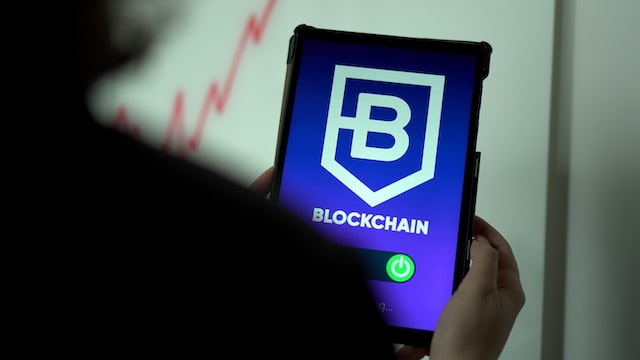
Blockchain technology, which is the underlying tech behind Bitcoin and other cryptocurrencies, has been hailed as a game-changer in a wide range of industries. From supply chain management to data security, many believe that blockchain will revolutionize how we do business in the 21st century. Now, it seems that blockchain’s impact may also be felt in the world of green finance.
In recent years, there has been an increasing focus on sustainable investing and financing as the world looks for ways to combat climate change. However, sustainable investing can be difficult to track and measure – but blockchain may offer a solution. From carbon trading to green bonds, here are four ways in which blockchain could reshape green finance:
What Is Blockchain and How Does It Work?
Blockchain is a distributed ledger technology that stores and records data in immutable blocks that are linked together. These blocks can contain anything from financial transactions to digital identities, ensuring security and privacy.
Transactions on the blockchain are secured using cryptography, allowing users to trust the validity of each block without relying on a third-party intermediary. This makes it much harder for hackers or malicious actors to tamper with the data stored on the blockchain, as each block is cryptographically tied to its predecessor and successor.
The decentralized nature of blockchain also ensures that no single entity controls all of the information stored on it – instead, all participants have access to an up-to-date copy of the entire ledger. This reduces costs associated with transaction processing as there’s no need for trusted intermediaries such as banks or brokers.
Carbon Credits Trading
Carbon credits, or carbon offsets, are special permits that allow companies to emit a certain amount of carbon dioxide (CO2) or other greenhouse gases into the atmosphere. The idea is that companies can purchase these credits in order to offset their own emissions. However, tracking and verifying the trade of carbon credits can be difficult, and it shows – the industry is full of fraud and corruption.
Blockchain technology could help make the process more secure and efficient by creating a transparent record of all carbon credit trades, at the same time reducing high energy consumption and impact on the environment if using a POS (proof-of-stake consensus mechanism) instead of POW (proof-of-work).
With blockchain technology, companies can easily track the origin and destination of carbon credits, as well as their authenticity. This would make it easier to verify that everyone is adhering to their emissions targets and help reduce the number of nefarious activities in the industry.
Green Bonds
Green bonds are a type of bond specifically designed to fund projects that have environmental benefits. In the past, these bonds have been challenging to track and verify, as there was no way of knowing how the money was actually being used.
Blockchain technology could help to solve this problem. By creating a secure, immutable ledger of all transactions, companies and investors can easily track the use of green bonds. This would ensure that money is actually being used for its intended purpose – funding projects that benefit the environment – and not for nefarious purposes such as corruption or fraud.
Smart Contracts
Smart contracts are computer protocols that facilitate, verify, and enforce the negotiation or performance of a contract. These contracts can be used to facilitate transactions or other agreements between two parties in an efficient and secure way.
In green finance, smart contracts could be used to automate the process of issuing green bonds or trading carbon credits. By using a blockchain-based platform with smart contracts, companies would be able to issue green bonds quickly and securely without having to rely on third-party intermediaries such as the abovementioned banks and brokers.
Smart contracts would also help to ensure that all parties involved with a transaction stick to their commitments, reducing fraudulent activities. This would make it easier and safer for investors to contribute to sustainable projects and help reduce costs associated with raising capital for these projects.
Tokenization
Tokenization is the process of converting assets – such as stocks, bonds, or real estate – into digital tokens. These tokens can then be traded on a blockchain-based platform in a secure and efficient manner.
In green finance, tokenization could provide an innovative way to invest in sustainable projects. For example, companies could issue tokens that represent ownership stakes in renewable energy projects or other environmentally-friendly initiatives. Investors would then be able to purchase these tokens and track their investments through the use of blockchain technology.
This would make it easier for people to invest in sustainable projects without having to go through traditional brokers or banks. Tokenized investments would also reduce transaction costs associated with trading these assets due to the increased efficiency of blockchain networks.
The Bottom Line
Blockchain technology has the potential to revolutionize green finance by making it more secure, efficient, and cost-effective. Through its various applications – including carbon credits trading, green bonds issuance, smart contracts implementation, and tokenization of assets – blockchain could make sustainable investing easier and more accessible than ever before.
In addition to increasing transparency in the industry by providing an immutable record of all transactions on a distributed ledger, blockchain could also help reduce fraud and corruption while lowering costs associated with raising capital for sustainable projects.
By leveraging this revolutionary technology, companies can work together towards a greener future as they invest in projects that benefit both the environment and society at large.
Bio:
Lisa Hunchenko is a freelance content writer with a master’s degree in marketing management, which helps her cover topics from digital marketing to customer relations to business strategies. Other than that, she’s fascinated by contemporary fiction, new technologies, and people, of course.
If not writing, you’ll find her catching some festival titles at the cinema or exploring new coffee shops across the city.


